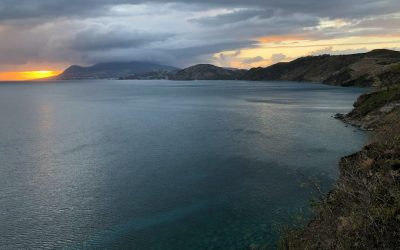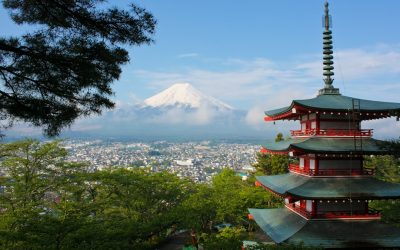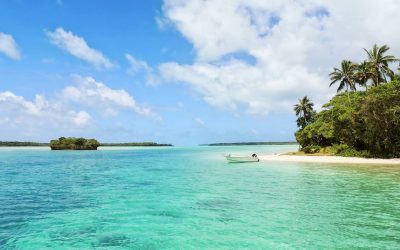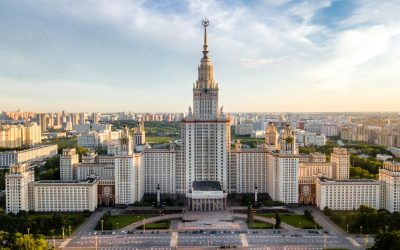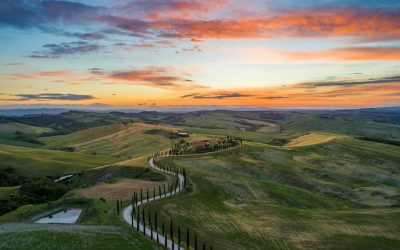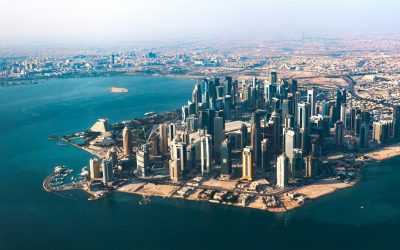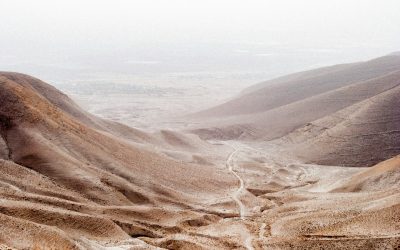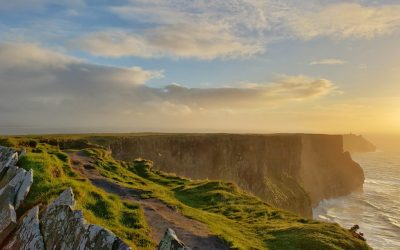World Geography
Geography is the study of the Earth’s landscapes, environments, and the relationships between people and their surroundings. It encompasses both the physical aspects of the Earth, such as its landforms, bodies of water, and climate, as well as the human aspects, including population distribution, cultures, and economies. World geography is a broad field that seeks to understand the complexities of our planet and how humans interact with it. By studying world geography, we can gain a deeper appreciation for the diversity of our planet and the interconnectedness of its various regions.
Geography is a multidisciplinary field that draws on elements of physical science, social science, and humanities. It involves the use of maps, spatial analysis, and geographic information systems (GIS) to understand the Earth’s surface and the processes that shape it. World geography also encompasses the study of human geography, which examines the ways in which people and their activities are distributed across the Earth. By understanding world geography, we can better appreciate the environmental, cultural, and economic challenges facing different regions of the world. This knowledge is crucial for addressing global issues such as climate change, resource management, and international development.
The Five Oceans and Seven Continents
The Earth’s surface is divided into five major oceans: the Pacific, Atlantic, Indian, Southern (or Antarctic), and Arctic Oceans. These vast bodies of water play a crucial role in regulating the Earth’s climate and supporting diverse marine ecosystems. The oceans also serve as important transportation routes and a source of food and other natural resources for human societies around the world.
In addition to the oceans, the Earth’s landmasses are divided into seven continents: Africa, Antarctica, Asia, Europe, North America, Australia (or Oceania), and South America. Each continent has its own unique physical and cultural characteristics, shaped by millions of years of geological processes and human history. From the deserts of Africa to the rainforests of South America, the continents offer a rich tapestry of landscapes and environments for exploration and study.
Major Mountain Ranges and Deserts
The Earth’s surface is also marked by major mountain ranges and deserts that have shaped the planet’s physical and cultural landscapes. The Himalayas, for example, are the highest mountain range in the world and are home to diverse ecosystems and cultures in countries such as India, Nepal, and Bhutan. The Andes in South America, the Rockies in North America, and the Alps in Europe are other prominent mountain ranges that have influenced human settlement patterns and economic activities.
Deserts cover about one-third of the Earth’s land surface and are characterized by low precipitation and extreme temperatures. The Sahara Desert in Africa is the largest hot desert in the world, while the Gobi Desert in Asia is one of the largest cold deserts. Deserts are not only home to unique flora and fauna but have also been important trade routes and cultural crossroads throughout history.
Climate Zones and Biomes
The Earth’s climate is influenced by a variety of factors, including latitude, altitude, ocean currents, and prevailing winds. As a result, the planet is divided into different climate zones, each with its own characteristic weather patterns and ecosystems. The equator, for example, experiences a tropical climate with high temperatures and heavy rainfall, while the polar regions have a cold and dry climate.
These climate zones give rise to different biomes, or large ecological areas characterized by distinct plant and animal communities. The tropical rainforest biome, found near the equator, is home to a diverse array of species and is vital for regulating the Earth’s climate. The grasslands biome, found in regions such as the African savannah and North American prairies, supports grazing animals and has been important for human agriculture throughout history.
Human Geography and Population Distribution
Human geography examines the ways in which people and their activities are distributed across the Earth’s surface. It encompasses topics such as population growth, migration patterns, urbanization, and cultural diversity. Understanding human geography is crucial for addressing global challenges such as poverty, inequality, and environmental degradation.
Population distribution is uneven across the world, with some regions experiencing rapid population growth while others are declining. The majority of the world’s population lives in Asia, particularly in countries such as China and India. Urban areas are also growing rapidly, with more than half of the world’s population now living in cities. This trend has significant implications for infrastructure development, resource management, and social inequality.
Historical and Cultural Geography
Historical geography examines how human activities have shaped the Earth’s landscapes over time. It explores topics such as colonialism, trade routes, and the rise and fall of empires. Cultural geography focuses on how human cultures have developed in different regions of the world and how they interact with their environments.
The Silk Road, for example, was an ancient trade route that connected China with Europe and facilitated the exchange of goods, ideas, and technologies across Eurasia. This historical trade route had a profound impact on the development of cultures and economies along its path. Similarly, cultural geographers study how different societies have adapted to their environments through practices such as agriculture, architecture, and religious beliefs.
The Importance of Geographic Knowledge
Geographic knowledge is crucial for addressing global challenges such as climate change, resource management, and international development. By understanding world geography, we can better appreciate the environmental, cultural, and economic challenges facing different regions of the world. This knowledge is crucial for addressing global issues such as climate change, resource management, and international development.
Geographic knowledge also helps us to understand our interconnectedness with other regions of the world. By studying world geography, we can gain a deeper appreciation for the diversity of our planet and the interconnectedness of its various regions. This understanding can foster a sense of global citizenship and empathy for people from different cultures and backgrounds.
In conclusion, world geography is a complex and multifaceted field that encompasses both physical and human aspects of the Earth’s landscapes. By studying world geography, we can gain a deeper appreciation for the diversity of our planet and the interconnectedness of its various regions. This knowledge is crucial for addressing global challenges such as climate change, resource management, and international development. It also helps us to understand our interconnectedness with other regions of the world and fosters a sense of global citizenship.
FAQs
What is world geography?
World geography is the study of the Earth’s landscapes, environments, and the relationships between people and their environments. It encompasses the physical features of the Earth, as well as the human activity that takes place on it.
Why is world geography important?
World geography is important because it helps us understand the world around us. It provides insights into the physical and human processes that shape our planet, and helps us make informed decisions about how to interact with our environment.
What are the main branches of world geography?
The main branches of world geography include physical geography, which focuses on the Earth’s natural features and processes, and human geography, which examines the relationships between people and their environments.
How does world geography impact our daily lives?
World geography impacts our daily lives in numerous ways, from influencing the weather and climate we experience, to shaping the availability of natural resources and influencing the distribution of populations and cultures around the world.
What are some key concepts in world geography?
Key concepts in world geography include location, place, human-environment interaction, movement, and region. These concepts help geographers understand and interpret the world around them.
Discover the Hidden Gems of Saint Kitts and Nevis: A British Caribbean Paradise
Saint Kitts and Nevis, located in the Caribbean Sea, is a small island nation that offers a perfect blend of natural beauty, rich history, and vibrant culture. Comprising two islands, Saint Kitts and Nevis, this British Overseas Territory is known for its stunning beaches, lush rainforests, and warm hospitality. It has become a popular tourist destination for those seeking a tropical paradise with a touch of British charm. With its pristine beaches, crystal-clear waters, and year-round sunshine, Saint Kitts and Nevis attracts visitors from all over the world. The islands offer a wide range of activities for tourists to enjoy, from relaxing on the beach to exploring the vibrant underwater world through scuba diving and snorkeling. The country’s rich history and cultural heritage also make it an intriguing destination for history buffs and culture enthusiasts. Summary Saint Kitts and Nevis is a beautiful British Caribbean paradise with a rich history and culture. The natural wonders of Saint Kitts and Nevis are diverse, ranging from beaches to rainforests. There are a variety of accommodation options in Saint Kitts and Nevis, from luxury resorts to local guesthouses. The local food scene is a fusion of British, African, and Caribbean flavors, offering a unique culinary experience. Saint Kitts and Nevis has a vibrant art and music scene, and there are plenty of activities to enjoy, from scuba diving to hiking. The Rich History of Saint Kitts and Nevis and Its Influence on the Culture Saint Kitts and Nevis has a fascinating colonial past that has greatly influenced its culture. The islands were first inhabited by the indigenous Kalinago people before being colonized...
Discovering the Wonders of Japan
Japan is a country that is rich in culture, history, and natural beauty. From the bustling metropolis of Tokyo to the serene countryside, there is something for everyone to enjoy in this fascinating country. In this blog post, we will explore the unique culture and attractions of Japan, from its traditional arts and crafts to its modern anime and technology. Whether you are a food lover, nature enthusiast, or history buff, Japan has something to offer you. Summary Researching Japan’s unique culture and attractions is essential for planning a successful trip. Tokyo’s bustling metropolis can be overwhelming, but it’s worth exploring. Japanese cuisine offers a wide variety of dishes beyond sushi and ramen. Traditional Japanese arts and crafts, such as calligraphy and pottery, are worth discovering. Visiting ancient temples and shrines is a must for experiencing Japan’s spiritual side. Planning the Trip: Researching Japan’s Unique Culture and Attractions Before embarking on your journey to Japan, it is important to do some research to fully appreciate the country’s unique culture and attractions. Start by reading books or watching documentaries about Japan’s history, traditions, and customs. This will give you a deeper understanding of the country and its people. When researching attractions, consider visiting popular destinations such as Kyoto, Osaka, Hiroshima, and Nara. These cities are known for their historical sites, beautiful temples and shrines, and vibrant local culture. Additionally, make sure to research seasonal events and festivals that may be happening during your visit. Japan is famous for its cherry blossom season in spring and its stunning autumn foliage. Arrival in Tokyo: First Impressions of the Bustling Metropolis Upon arriving...
Exploring the Beauty and Resilience of Rwanda: A Journey Through the Heart of Africa
Rwanda, known as the “Land of a Thousand Hills,” is a small but captivating country located in East Africa. Despite its tragic history, Rwanda has emerged as a resilient and beautiful travel destination. With its stunning landscapes, diverse wildlife, rich cultural heritage, and warm hospitality, Rwanda offers a unique and unforgettable experience for travelers. However, it is crucial to practice sustainable tourism in order to preserve Rwanda’s beauty and resilience for future generations. Sustainable tourism plays a vital role in preserving Rwanda’s natural and cultural heritage. By promoting responsible travel practices, we can ensure that the country’s ecosystems are protected, wildlife is conserved, and local communities benefit from tourism. Sustainable tourism also helps to minimize the negative impacts of tourism, such as overdevelopment and environmental degradation. By supporting sustainable tourism initiatives in Rwanda, we can contribute to the country’s long-term sustainability and help preserve its beauty and resilience. Summary Rwanda is a land of endless beauty and resilience, with enchanting landscapes, remarkable wildlife recovery, rich cultural heritage, and inspiring rise from the ashes. Exploring Rwanda’s vibrant cities and towns offers a unique experience of the country’s history and modernity. Rwanda’s cuisine is a fusion of flavours and cultures, reflecting the country’s diversity and hospitality. Rwanda’s thriving arts and crafts scene showcases the creativity and talent of its people, and offers unique souvenirs for visitors. Rwanda’s sustainable tourism approach preserves the beauty and resilience of the land, while providing opportunities for economic growth and community development. Rwanda: A Land of Endless Beauty and Resilience Rwanda is blessed with breathtaking natural beauty and diverse landscapes. From the rolling hills covered in...
Discovering the Hidden Gems of Jamaica: A Journey Through the Island’s Unexplored Treasures
Jamaica is a popular tourist destination known for its stunning beaches, vibrant culture, and delicious cuisine. From the bustling streets of Kingston to the laid-back vibes of Negril, there is no shortage of things to see and do in this Caribbean paradise. However, beyond the well-known attractions lies a world of hidden gems waiting to be discovered. In this blog post, we will explore some of Jamaica’s lesser-known destinations and uncover the secrets that make them so special. The concept of hidden gems refers to those off-the-beaten-path locations that are often overlooked by tourists in favor of more popular attractions. These hidden gems offer a unique and authentic experience, allowing visitors to truly immerse themselves in the local culture and natural beauty of a destination. The purpose of this blog post is to shed light on these hidden treasures and encourage travellers to venture beyond the typical tourist hotspots. Summary Jamaica has many hidden gems waiting to be discovered beyond the typical tourist destinations. Exploring the road less travelled in Jamaica can lead to discovering unexplored treasures. Jamaica’s hidden beaches and coves offer a unique and secluded experience for travellers. The island’s hidden waterfalls are some of the most scenic spots to visit in Jamaica. Jamaica’s lush and colourful flora can be explored in the island’s secret gardens. The Unexplored Treasures of Jamaica While Jamaica is famous for its stunning beaches and vibrant cities, there are many lesser-known destinations that are equally deserving of attention. These hidden gems offer a chance to escape the crowds and discover a side of Jamaica that few tourists get to see. Whether it’s...
Exploring the Enigmatic Charm of Russia: A Journey Through its Rich Culture and History
Russia has long held a reputation as a mysterious and enigmatic country, captivating the imagination of people around the world. Its vast landscapes, rich cultural heritage, and complex history have all contributed to its allure. From the grandeur of the Tsars to the rise and fall of the Soviet Union, Russia’s story is one of triumphs and tragedies, making it a fascinating destination for travelers and adventurers alike. Summary Russia’s cultural heritage is rich and diverse, encompassing art, music, and literature. The rise and fall of the Tsars offers a glimpse into Russia’s imperial past. The Soviet era was marked by the Communist Revolution and its aftermath. The Russian Orthodox Church is the spiritual heart of Russia. Moscow and St. Petersburg are two of Russia’s most iconic cities. Russia’s Cultural Heritage: A Tapestry of Art, Music and Literature Russian literature has had a profound impact on the world stage, with authors such as Leo Tolstoy and Fyodor Dostoevsky producing timeless works that continue to be studied and admired today. These literary giants delve into the depths of the human condition, exploring themes of love, loss, and redemption. Their works have not only shaped Russian culture but have also influenced writers around the globe. In addition to literature, Russian art and architecture are renowned for their beauty and grandeur. From the iconic onion domes of St. Basil’s Cathedral in Moscow to the opulent palaces of St. Petersburg, Russian architecture is a testament to the country’s rich history and cultural heritage. Russian art, with its vibrant colors and intricate details, reflects the soul of the Russian people. Russian music is another...
Discovering the Rich Culture and Natural Beauty of Ivory Coast: A Journey Through West Africa
Located on the western coast of Africa, Ivory Coast, also known as Côte d’Ivoire, is a hidden gem waiting to be discovered by adventurous travelers. With a rich history, vibrant culture, and stunning natural landscapes, Ivory Coast offers a unique and off-the-beaten-path experience for those seeking something different from the typical tourist destinations. Ivory Coast has a fascinating history that dates back centuries. It was once part of the powerful Ashanti Empire and later became a French colony. The country gained independence in 1960 and has since developed into a diverse and culturally rich nation. The people of Ivory Coast are known for their warmth and hospitality, making it an ideal destination for those looking to immerse themselves in the local culture. Summary Ivory Coast is a hidden gem in West Africa, with vibrant culture, natural wonders, and warm people. Exploring the culture and traditions of Ivory Coast reveals a rich history and diverse ethnic groups. From beaches to forests, Ivory Coast offers a range of natural wonders to discover and explore. The history and architecture of Ivory Coast showcase a journey through time and colonial influences. Sampling the flavours of Ivory Coast is a culinary adventure, with unique dishes and ingredients to try. Exploring the Vibrant Culture and Traditions of Ivory Coast One of the highlights of visiting Ivory Coast is experiencing its vibrant culture and traditions. The country is home to over 60 ethnic groups, each with its own unique customs and traditions. From the Baoulé people in the central region to the Senufo people in the north, there is a wealth of cultural diversity to explore....
Discovering the Hidden Gems of Romania: A Journey Through its Rich History and Culture
Romania, located in Eastern Europe, is a country that often goes unnoticed by travelers. However, this hidden gem is a treasure trove of natural beauty, rich history, and vibrant culture. From picturesque landscapes to ancient castles, Romania offers a unique and authentic travel experience that is sure to leave a lasting impression. While many tourists flock to popular destinations like Bucharest and Transylvania, there are countless lesser-known attractions and experiences waiting to be discovered. Whether it’s exploring the charming villages of Maramures or hiking through the breathtaking Carpathian Mountains, Romania has something for every type of traveler. Summary Romania is a land of hidden gems waiting to be discovered. The rich history of Romania is worth exploring, from ancient times to modern day. Romania’s cultural diversity is fascinating, with influences from various ethnic groups. The natural wonders of Romania, from the Carpathian Mountains to the Danube Delta, are breathtaking. Romania’s traditional cuisine is a delight for foodies, with unique flavours and dishes to try. Uncovering the Rich History of Romania Romania has a fascinating history that dates back thousands of years. From the Dacians and Romans to the Ottoman Empire and communist era, the country has seen its fair share of conquests and influences. Today, visitors can explore historical landmarks and sites that offer a glimpse into Romania’s past. One such landmark is the Bran Castle, often associated with the legend of Dracula. This medieval fortress is perched on a hilltop in Transylvania and is said to have inspired Bram Stoker’s famous novel. Another must-visit site is the Palace of Parliament in Bucharest, which is the second-largest administrative building...
Uncovering the Charm of Italy: A British Traveller’s Guide
Italy has long been a favourite destination for British travellers, and it’s not hard to see why. The country’s rich history, vibrant culture, and delicious cuisine make it an irresistible place to explore. From the stunning architecture of Rome to the art-filled streets of Florence and the romantic canals of Venice, Italy offers something for everyone. Whether you’re a history buff, a food lover, or simply looking for a beautiful place to relax, Italy has it all. One of the main reasons why Italy is such a popular destination for British travellers is its rich history. The country is home to some of the most famous ancient ruins in the world, including the Colosseum in Rome and the ruins of Pompeii. Walking through these ancient sites is like stepping back in time and offers a fascinating glimpse into Italy’s past. In addition to its history, Italy is also known for its vibrant culture. From the bustling piazzas of Florence to the charming canals of Venice, there is always something happening in Italy. Whether it’s a local festival, a street performance, or simply enjoying a leisurely meal at a sidewalk cafe, there is no shortage of things to see and do in this beautiful country. Summary Italy is a must-visit destination for British travellers. Rome, Florence, and Venice are historic cities worth exploring. Italian cuisine offers a range of delicious options, from pizza to gelato. The Amalfi Coast, Cinque Terre, and other coastal destinations are beautiful to discover. Italy is home to artistic treasures by Michelangelo, Da Vinci, and Botticelli. Exploring the Historic Cities of Italy: Rome, Florence, and Venice...
Discovering the Hidden Gems of Qatar: A British Expat’s Journey
Nestled on the northeastern coast of the Arabian Peninsula, Qatar is a small but vibrant country that often gets overshadowed by its larger and more well-known neighbours. However, this hidden gem is a destination that should not be overlooked. With its rich history, diverse culture, and stunning landscapes, Qatar offers a unique and unforgettable experience for travellers. Qatar’s history dates back thousands of years, with evidence of human habitation dating back to the Stone Age. Over the centuries, the region has been influenced by various civilizations, including the Persians, Ottomans, and British. Today, Qatar is a modern and cosmopolitan country that seamlessly blends its traditional heritage with contemporary developments. One of the lesser-known attractions of Qatar is its thriving arts and entertainment scene. The country is home to world-class museums, theatres, and music festivals that showcase both local and international talent. From the iconic Museum of Islamic Art to the vibrant Katara Cultural Village, there are plenty of opportunities to immerse yourself in Qatar’s rich cultural heritage. Summary Qatar is a land of hidden gems waiting to be discovered. As a British expat in Qatar, I have had the opportunity to explore the country’s rich history and culture. From historical sites to natural wonders, Qatar has something for everyone. The country boasts a thriving arts and entertainment scene, as well as numerous sporting and outdoor activities. Qatar’s local festivals and celebrations offer a unique glimpse into the country’s traditions and customs. My Journey as a British Expat in Qatar As a British expat who made the move to Qatar several years ago, I can attest to the unique experiences...
Exploring the Rich Cultural Heritage of Israel: A Journey Through Time
Israel is a country with a rich history and culture that spans thousands of years. From its ancient biblical roots to its modern-day innovations, Israel has made significant contributions to the world in various fields. This article will provide an in-depth exploration of Israel’s history, culture, and contributions, highlighting its ancient history, religious traditions, art and architecture, culinary delights, natural wonders, modern history, music scene, literary heritage, cultural diversity, and scientific and technological advancements. Summary Israel has a rich ancient history dating back to biblical times and the Roman Empire. The country is home to diverse religious traditions including Judaism, Christianity, and Islam. Israel’s art and architecture is a fusion of East and West, creating a unique cultural landscape. The culinary scene in Israel offers a taste of the Mediterranean with a variety of delicious dishes. Israel boasts natural wonders such as the Dead Sea and the Golan Heights, making it a popular tourist destination. The Ancient History of Israel: From Biblical Times to the Roman Empire Israel’s ancient history is deeply rooted in biblical times. It was during this period that the great kings of Israel, such as King David and King Solomon, ruled over the land. These kings were known for their wisdom and prosperity, and their reigns marked a golden age for Israel. However, this period was also marked by conflict and exile. The Babylonian empire conquered Jerusalem in 586 BCE and destroyed the First Temple, leading to the exile of the Jewish people. After several decades, the Persians allowed the Jews to return to Jerusalem and rebuild the Second Temple. However, this period was short-lived...
Discovering the Charm of Portugal: A Journey through its Colourful Cities and Breathtaking Landscapes
Nestled on the western edge of the Iberian Peninsula, Portugal is a country that is often overlooked by travellers in favour of its more popular neighbours, Spain and France. However, those who do venture to this enchanting land are rewarded with a rich history, vibrant culture, and stunning landscapes. From the bustling streets of Lisbon to the picturesque vineyards of the Douro Valley, Portugal offers a diverse range of experiences that are sure to captivate any visitor. Portugal has a long and storied history, with influences from various civilizations including the Romans, Moors, and Celts. This rich tapestry of cultures is evident in the country’s architecture, cuisine, and traditions. The Portuguese people are known for their warm hospitality and love for life, which is reflected in their colourful festivals and lively music. Whether you’re exploring the narrow streets of Porto or relaxing on the sun-kissed beaches of the Algarve, you’ll find that Portugal is a land of colour and charm. Summary Portugal is a land of colour and charm, with a rich cultural and historical heritage. Lisbon is a vibrant city that offers a wealth of cultural and historical attractions. Porto is a coastal haven that is famous for its wine and stunning natural beauty. Coimbra is a cultural and academic gem that is home to some of Portugal’s most beautiful architecture. Sintra is a fairy tale destination that is famous for its magnificent castles and palaces. Exploring the Vibrant City of Lisbon: A Cultural and Historical Hub Lisbon, the capital city of Portugal, is a vibrant hub of culture and history. With its winding streets, colourful buildings, and...
Discovering the Charm of Ireland: A Journey through Emerald Land
Ireland, also known as the Emerald Isle, is a country located in the North Atlantic. It is known for its stunning landscapes, rich history, vibrant culture, and warm hospitality. The country is divided into two parts: the Republic of Ireland, which covers most of the island, and Northern Ireland, which is part of the United Kingdom. Ireland is a popular tourist destination for many reasons. Firstly, its natural beauty is unparalleled. From rolling green hills to rugged coastlines, Ireland’s countryside is a sight to behold. Additionally, the country’s rich history and cultural heritage make it a fascinating place to explore. Visitors can immerse themselves in ancient ruins, medieval castles, and traditional music sessions. Lastly, the warmth and friendliness of the Irish people make visitors feel welcome and at home. Summary Ireland’s countryside is breathtakingly beautiful, with rolling hills, lush greenery, and stunning coastlines. Ireland’s rich history spans from ancient times to modern day, with fascinating stories and landmarks to discover. Irish culture is vibrant and diverse, with music, art, and literature playing a significant role in the country’s identity. Irish folklore is full of magic and mystery, with legends and myths that have been passed down for generations. Irish hospitality is warm and welcoming, with locals eager to share their culture and traditions with visitors. Exploring the Countryside: The Beauty of Ireland’s Rural Landscape One of the highlights of visiting Ireland is exploring its breathtaking countryside. The landscape is characterized by lush green fields, rugged mountains, and dramatic coastlines. The countryside offers a peaceful retreat from the hustle and bustle of city life. Popular destinations for countryside exploration include...
